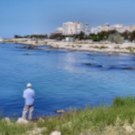Thai Floods To Last Four To Six Weeks More: Govt
-
Recently Browsing 0 members
- No registered users viewing this page.
-
Topics
-
-
Popular Contributors
-
-
Latest posts...
-
119
Things thai people do that make no sense
BTW - to those "thumbs down" people ---- The thumbs down icon is the digital equivalent of a grunt — no effort, no reasoning, and no contribution. If you've got a point, make it. Otherwise, it's just drive-by disapproval. Let's see who continues to grunt! -
20
-
6
Report Doctors in Thaksin Hospital Saga Face Promotion Uproar
What happened to innocent until proven guilty? They could be promoted then demoted if proven guilty. -
8
Honda Wave
Since these bikes are really easy to work on, how about installing a custom cushion? I've seen lots of options online. -
48
-
107
US CDC report shows no link between thimerosal-containing vaccines and autism
There are many cases where the parents have noticed a steep decline in their kids abilities. Can be evident after just a few hours after having a vaxx. Are these parents wrong?
-
-
Popular in The Pub







.thumb.jpeg.d2d19a66404642fd9ff62d6262fd153e.jpeg)






Recommended Posts
Create an account or sign in to comment
You need to be a member in order to leave a comment
Create an account
Sign up for a new account in our community. It's easy!
Register a new accountSign in
Already have an account? Sign in here.
Sign In Now